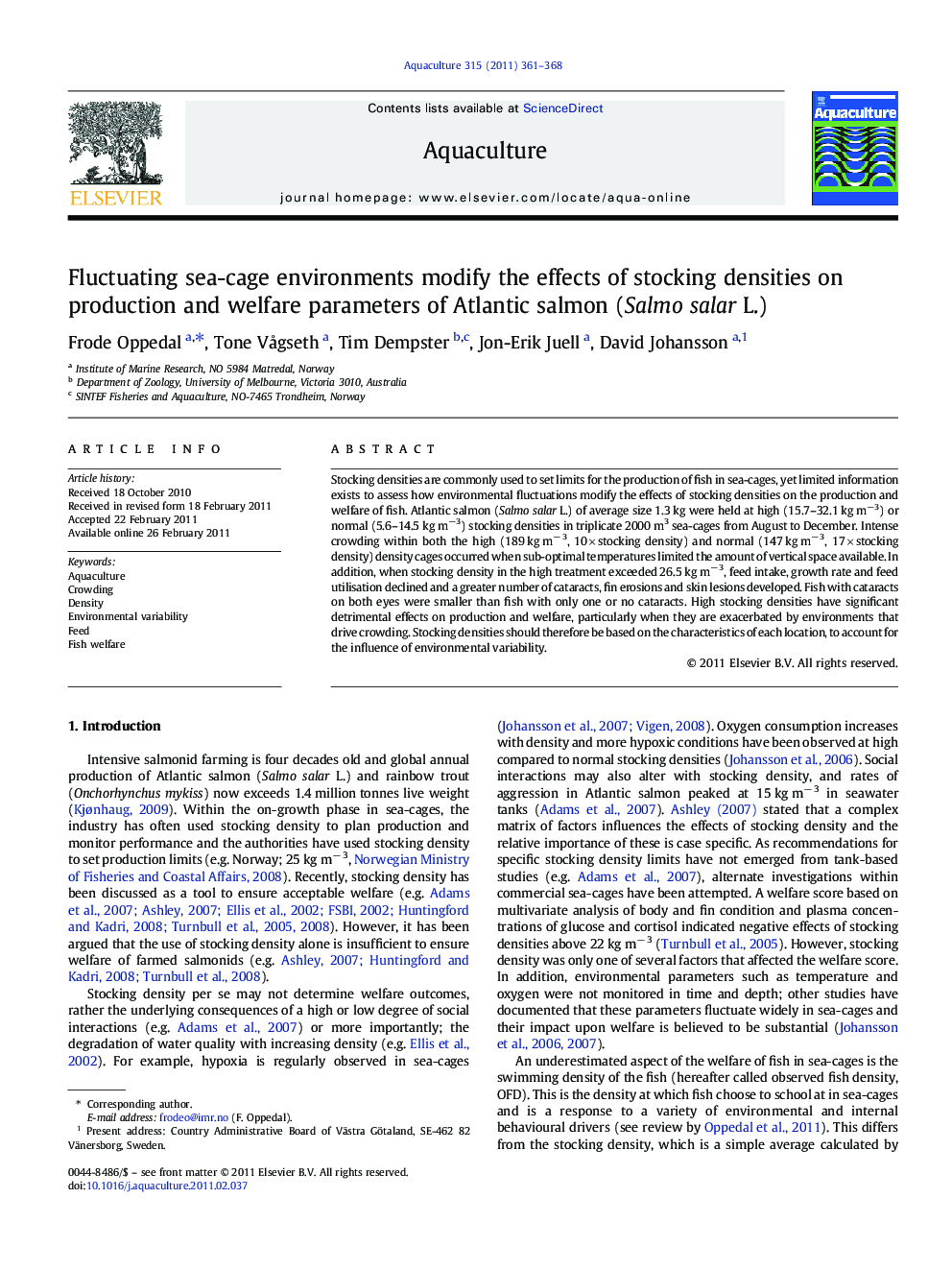| Article ID | Journal | Published Year | Pages | File Type |
|---|---|---|---|---|
| 2423165 | Aquaculture | 2011 | 8 Pages |
Stocking densities are commonly used to set limits for the production of fish in sea-cages, yet limited information exists to assess how environmental fluctuations modify the effects of stocking densities on the production and welfare of fish. Atlantic salmon (Salmo salar L.) of average size 1.3 kg were held at high (15.7–32.1 kg m−3) or normal (5.6–14.5 kg m−3) stocking densities in triplicate 2000 m3 sea-cages from August to December. Intense crowding within both the high (189 kg m− 3, 10 × stocking density) and normal (147 kg m− 3, 17 × stocking density) density cages occurred when sub-optimal temperatures limited the amount of vertical space available. In addition, when stocking density in the high treatment exceeded 26.5 kg m− 3, feed intake, growth rate and feed utilisation declined and a greater number of cataracts, fin erosions and skin lesions developed. Fish with cataracts on both eyes were smaller than fish with only one or no cataracts. High stocking densities have significant detrimental effects on production and welfare, particularly when they are exacerbated by environments that drive crowding. Stocking densities should therefore be based on the characteristics of each location, to account for the influence of environmental variability.
